“OPERATION POWER PACK”
A Young Lieutenant’s Experiences
in the Dominican Republic
By Gary L. Macnamara
My name is Gary L. Macnamara and I was commissioned a 2nd Lieutenant of Infantry in September 1965. After completing Basic Airborne and the Infantry Officer Basic Course (IOBC), I reported to Fort Bragg for assignment to the 82nd Airborne Division on January 2, 1966. Fort Bragg was very cold and I volunteered for assignment to the 1st Brigade, which was then in the Dominican Republic.
On April 30, 1965, US Marines and the 82nd Airborne Division would be part of an Organization of American States (OAS) peace keeping force in the Dominican Republic. The 1st Battalion (ABN), 508 Infantry was the Division Ready Force (DRF) Battalion. According to the 82nd Airborne Division Readiness SOP, this would be the first battalion to deploy followed by the 1st Battalion (ABN), 505 Infantry, the 2nd Battalion (ABN) 508 Infantry would be the third battalion to deploy. MG York, the Division Commander, was on the first aircraft to land at San Isidro Airfield.
At the last minute the operation was changed from an airborne operation to an airland operation. It was “assumed” that the airfield was in friendly hands. This was probably a wise decision since the intended drop zone was found to contain coral and there would have been a number of injuries. A Marine Task Force landed on Red Beach and linked up with the paratroopers on 3 May 1965 about two miles southeast of the Duarte Bridge. A rebel sniper fired on the 82nd troops and was killed. The Marines heard the fire and thought they were being fired upon and fired on the 82nd troops. An angry MG York stood up, walked to the middle of the street and identified himself by yelling.
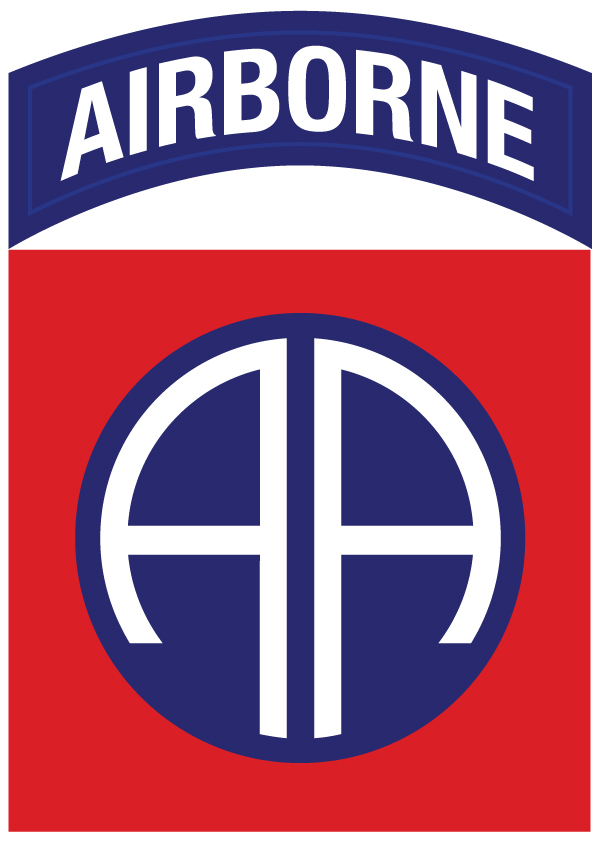
Insignia of the 82nd Airborne Division
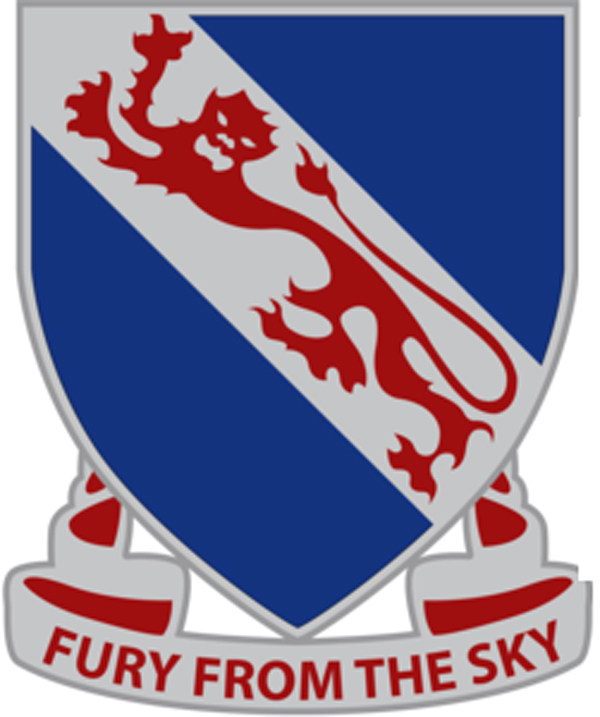
Insignia of the 508th Parachute Infantry Regiment (508th PIR, “Red Devils” or “Fury from the Sky”)
Ultimately the entire 82nd Airborne Division would deploy and two Brigades (BDE) would redeploy back to Fort Bragg after the major fighting concluded, leaving the 1st BDE to continue the mission of “peace keeping” with their three battalions. Approximately 69 troopers were killed during “Operation Power Pack” and some Combat Infantry Badges (CIB) were issued but many were later revoked.
When I joined the 1st BDE, I was assigned to the 2nd Battalion (ABN) 508 Infantry. The Battalion was bivouacked on the golf course of the Embajador Hotel, about six miles west of the Ozama River. The 1st BDE Headquarters (HQS) was in the golf course club house. The Brigade Commander was Col Hard and the Deputy Commander was LTC Irons (I did not make these names up. They are the real names of the personalities.) My Battalion Commander was LTC Costa, a fine gentleman whom I bumped into in Vietnam a few years later, but that is a different story.
I was assigned to “B” Company as a Rifle Platoon Leader. My platoon Sergeant was SFC Crews and the platoon numbered about 35 men. Each platoon were billeted in two GP Medium tents and the officers were housed in two GP Small tents at the head of the company street. The company headquarters was billeted in a GP Medium tent behind the officers’ tents. 1SG Moody
Turbiville was our company First Sergeant and bunked in the rear of the headquarters tent. He was a World War II veteran of the 82nd and one of the best First Sergeants I ever encountered. The mess hall was on the far side of the company street and the food was reasonably good. The Division Engineers had constructed crowned ungraded streets and the Battalion was generally organized in a square. The perimeter was surrounded by a concertina fence. A helipad was also constructed and we rehearsed the relatively new airmobile operations.
The Battalion had three main missions. We had a rifle company conduct security or guard duty on the exterior of the Jaragua Hotel, Gen. Palmers’ quarters and the US Embassy on the island. A second company would be assigned the Immediate Ready Force (IRF) mission and would conduct “close in” training in the company area. The third mission was external training conducted in the rural areas of the Dominican Republic. On one occasion while on IRF status my platoon was flown to a field location as part of an exercise.
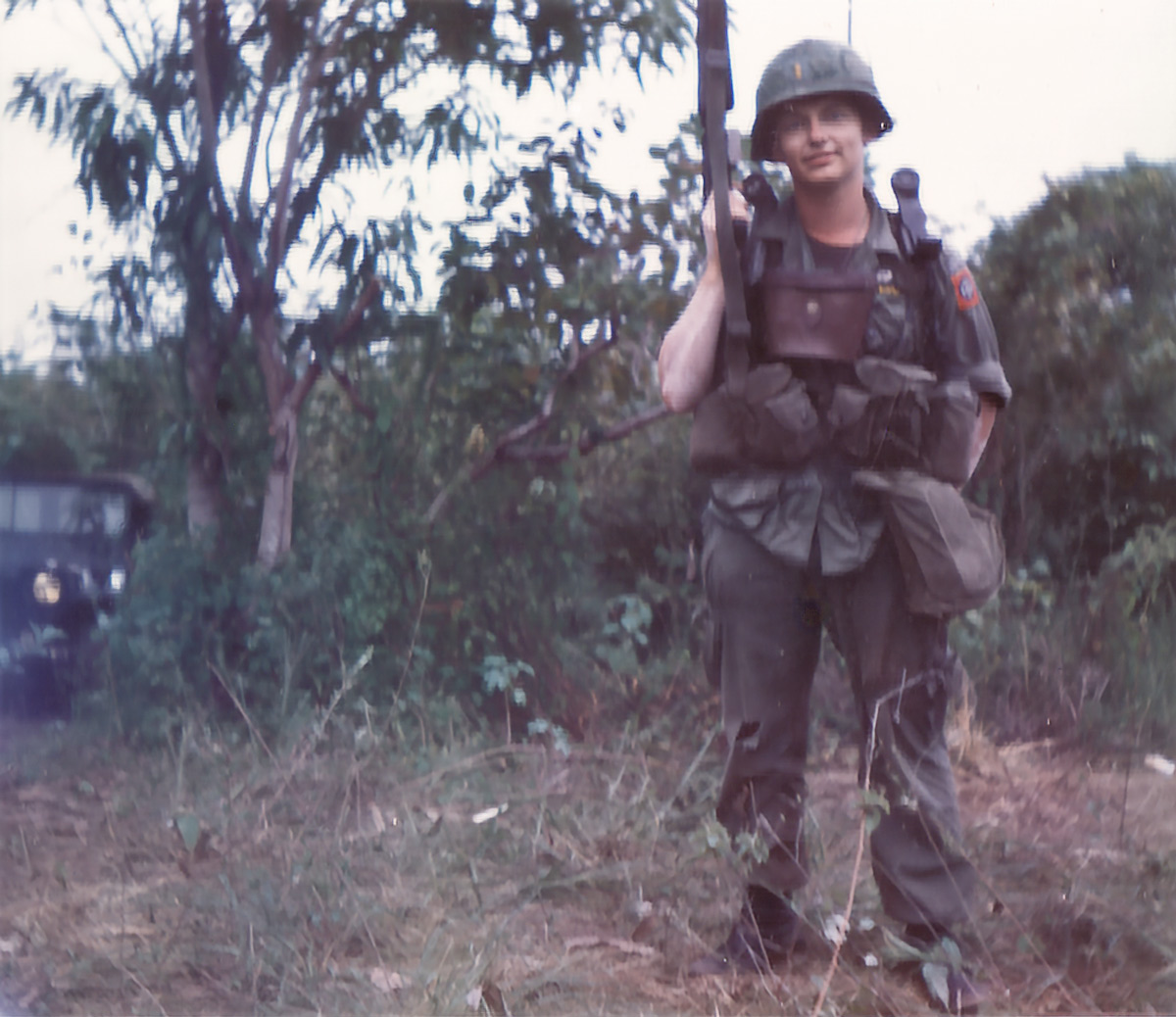
Then 1st Lt Gary Macnamara in the Dominican Republic. (Photo courtesy Gary Macnamara)
Since we were an Airborne unit, we had to conduct proficiency jumps. These were conducted at San Isidro Airfield on the east side of the Ozama River, about 20 miles away. Since there was still some rebel activity, we usually had an armed detail as we travelled the Line of Communication (LOC) across the Ozama to the airfield. I made my “cherry” jump from a UH1B, three days after landing in country. I was fortunate to have a Sergeant Major (SGM) who literally showed me the ropes. Our Drop Zone (DZ) was a sugar cane field which was named the Dickey Chapelle Drop Zone (She was a reporter who was killed in Vietnam. The Chaplain who administered the last rites to her was named Mc Namara, but again that is a different story). My first jump was a bit of a heart stopper, when I landed in a sugar cane with leaves over my head and had a Dominican national moving toward me with a machete. He wanted to carry my parachute to the turn-in point for a nominal fee. Needless to say I vowed to be prepared and carried a 2” revolver under my jungle fatigues.
Since the Brigade had been in the Dominican Republic for over six months, it was decided that we would conduct squad and platoon level Army Training Tests (ATT). Much of my previous training had not adequately prepared me for some of these exercises. The maps we used were photo maps with a superimposed grid. Terrain features were very difficult to discern. Usually the area in which one was interested was covered by a cloud marked with a “c”. My squads passed their ATTs and I passed my platoon ATT. With the high heat and humidity I had my first encounter with heat cramps. Fortunately it was toward the end of the day and I was able to rehydrate and complete the mission.
I was later transferred to “A” company and assigned an S Rifle Platoon Leader. My Company Commander was Wayne Wheeler, one of the best company commanders under whom I served. My platoon Sergeant was SSG Partain, a veteran of the 187 RCT “Rakkasans” from Korea. I learned a lot from him. Among the missions my platoon was assigned was to conduct an airborne operation from a C-123 aircraft and move to an area to set up and run a M79 qualification range. Of course we had to build the range and take it down. The high point of the day was a shoot off between me and SSG Partain. The prize was a case of beer. Boy that beer tasted good.
The Brigade also had to build an M16 qualification range for our annual qualification. I still have my official qualification DOMREP orders for “expert” with the M16 rifle.
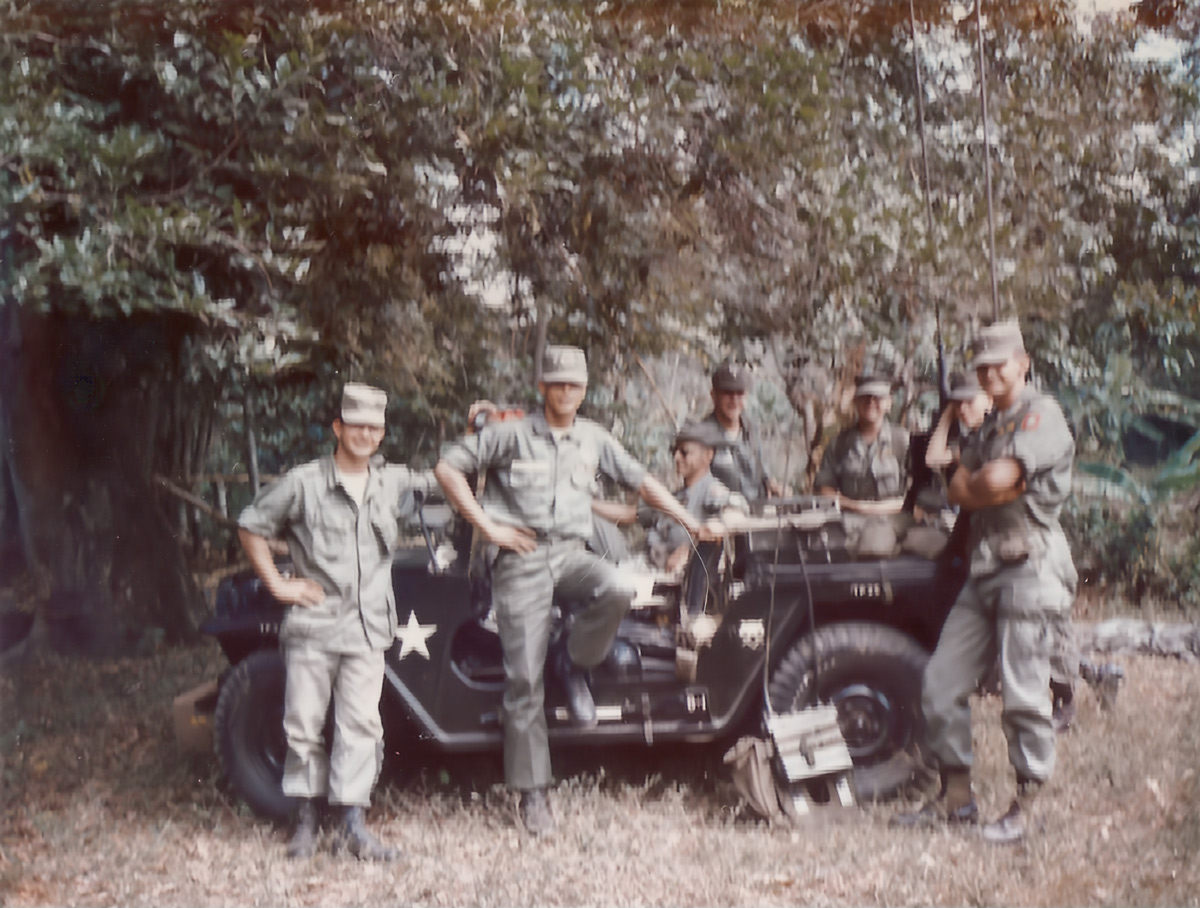
2nd Battalion (ABN) 508 Infantry “B” company staff (Photo courtesy Gary Macnamara)
We also had some lessons learned. I spoke to SSG Jack Merle, who was the Anti-Tank Platoon Sergeant. The rebels had occupied and were thought to be unloading weapons from a ship, the Santo Domingo, on the west side of the Ozama River. Jack fired on the ship and put a 106mm recoilless rifle rounds at the water line of the ship and it sank into the harbor.
One of the critical operations for me was the Battalions’s deployment around the US Embassy in response to demonstrations on 1 May 1966. My radio operator (RTO) was on guard duty outside the embassy and was getting his boots shined by a Dominican boy. The RTO was changing his rifle from his left side to his right side and the rifle caught on the hook of his web gear and discharged killing the Dominican boy. Since this was the anniversary of the revolution we had major demonstrations. We did not have much riot control training, but fortunately we did not have to repel demonstrators coming over the walls, but we had the tear gas if we needed it.
We knew that our mission was coming to an end. Elections had been held in the Dominican Republic and Balaguer was elected President. The rebel leader Caamano left the island from our helipad at Camp Randall. My platoon had the mission for the front gate through which he passed. On 21 September 1966, we bid a fond farewell to our tropical paradise. As soon as we left the compound the Dominicans stormed our camp and started removing the tin from the roofs of the semi-permanent building to use for their own shelter. We moved by truck to Red Beach and were met by the United States Navy. We were to be transported to the United States on a Landing Ship Tank (LST). The entire battalion and equipment was loaded on the LST. While moving up the entrance ramp in the bow, I met one of my high school classmates. He was an Ensign and we established old acquaintances. We had been informed that the ship was air conditioned. What they did not tell us was that the air conditioning only cooled the interior of the ship from 120 degree to 80 degrees.
When we arrived at the port of Wilmington, we were bussed to Fort Bragg. A new Chapter was being written to the Division’s history. Many of 2nd Lieutenants were promoted to First Lieutenant and transferred to the 3rd BDE, which had many companies commanded by 2nd Lieutenants. The 1st BDE was put through a series of inspections including a Command Maintenance and Management Inspection (CMMI) and an Inspector General (IG) inspection.
For a young 2nd Lieutenant I can think of no better experience than joining a unit on an overseas assignment? I learned so much about myself and the Army. I had the same platoon for at least six months and knew every man by his walk, sound of voice, and appearance.
I would like to remember two Lieutenants with whom I served in the Dominican Republic who did not return from Vietnam — Lt. Richard Galen and Lt. Alan Perrault. All gave some. Some gave all.
About the Author:
Lieutenant Colonel, Infantry, USAR (retired) Gary L. Macnamara currently serves as the secretary for Chapter 78.
Gary Macnamara completed his first combat tour in the Dominican Republic in 1966, serving as a new second lieutenant with the 82nd Airborne Division. He later served in Vietnam. Gary was a company commander in both the 1st Cavalry Division (Vietnam) and Special Forces.
Beside a twenty-eight-year military career, Gary Macnamara retired from the Los Angeles Police Department as a lieutenant after serving for over 35 years.
LTC Gary Macnamara is a long-standing member of SFA Chapter 78 and has devoted significant time and energy to various projects since he joined the chapter.
Gary has played a significant role in two major chapter activities: the Green Beret Shooters Cup and the Reserve Officer Training Candidate Program at California State University Fullerton.
In 2010, at the inception and design of the Green Beret Shooters Cup, LTC Macnamara began by implementing a combat pistol and safety course to train members of the CSUF ROTC Pistol Team that were to compete in the first GBSC. He garnered the necessary firearms, ammunition, and safety officers to conduct this course to help develop the necessary skills and safety of cadets who were to compete against members of the law enforcement community and the military. He was successful, and many of these ‘students’ outscored the professionals. Because of this success, he continued the program for the following two years of the competition.
At the start of the second year of the GBSC, Gary designed and implemented a civilian competition to raise further funds, which were donated to the Green Beret Foundation. During this event, he worked as safety officer and scored the competition. This side event alone brought in several thousand dollars.
Soon after joining Chapter 78, Gary volunteered to attend and represent Chapter 78 at the annual ROTC Awards Program, where he presented SF Medals and Certificates and later a monetary donation to members of the CSUF Cadets. He developed a working relationship with the Professor of Military Science and was initially asked to teach a military history class. Over the course of a semester, with excellent reviews of his teaching ability and knowledge of historically significant military subjects, he was asked to begin teaching a series of subjects to the CSUF ROTC Cadets. Gary continues as a volunteer adjunct lecturer of Military History for CSUF. He uses his background in Special Warfare and Unconventional Warfare as a Special Forces-qualified officer to assist both the Professor of Military Science with Battle Analysis, Military Ethics, and Problems with Command and the Primary Military History Instructor with classes on the Mexican-American War, Civil War, World War II, Korea, Vietnam, and any other classes.
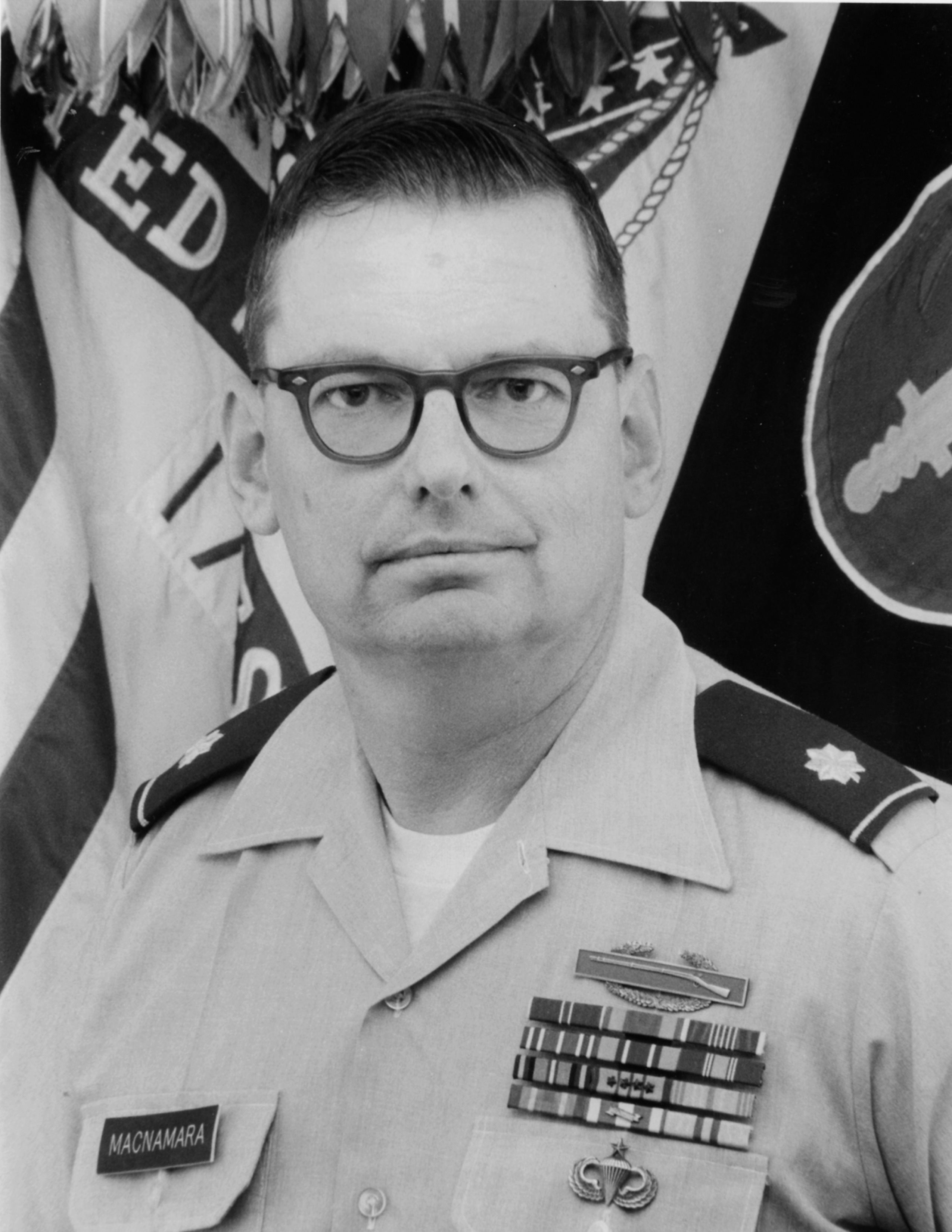
Gary Lewis MacNamara
Gary L. Macnamara
Leave A Comment